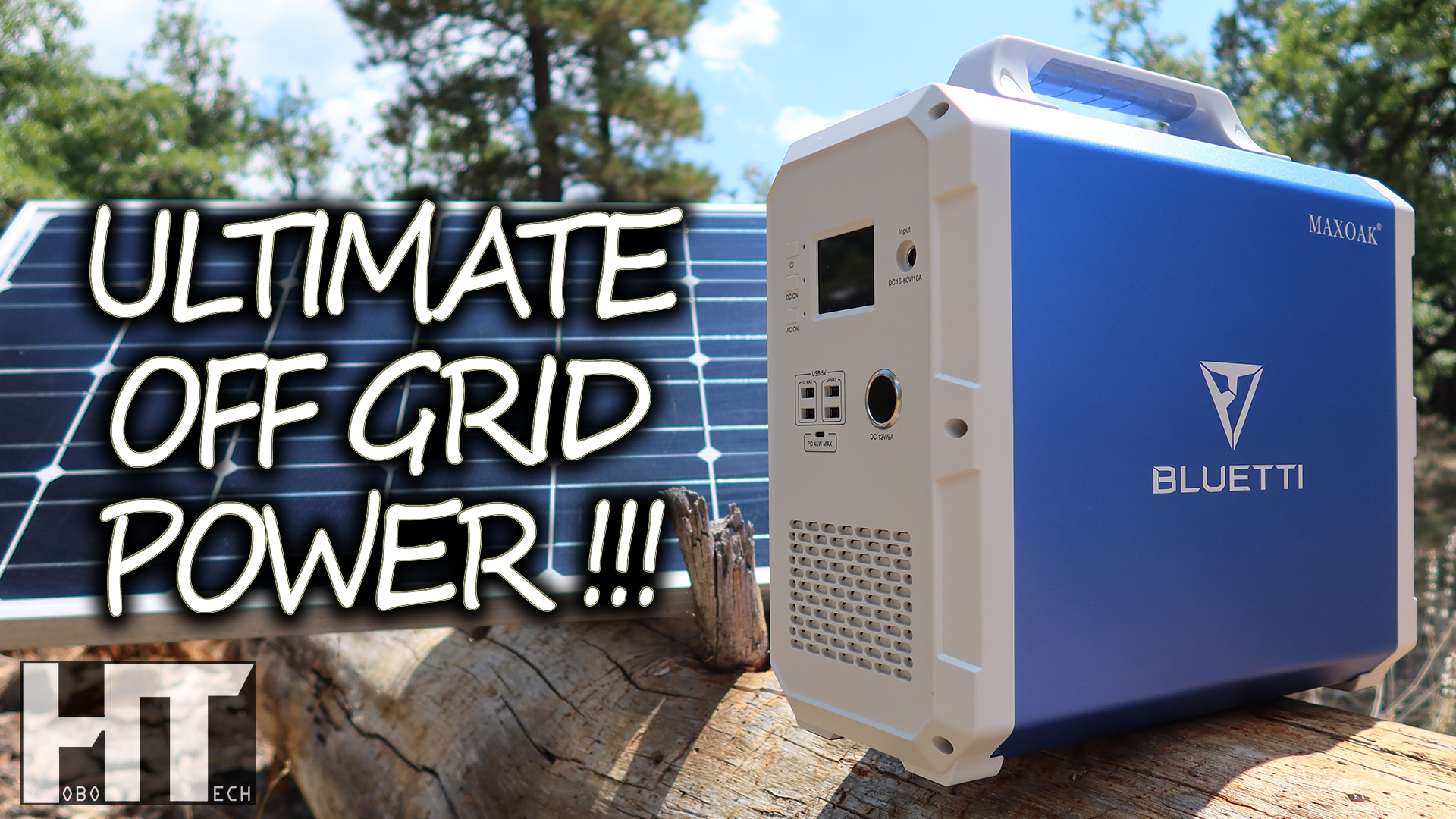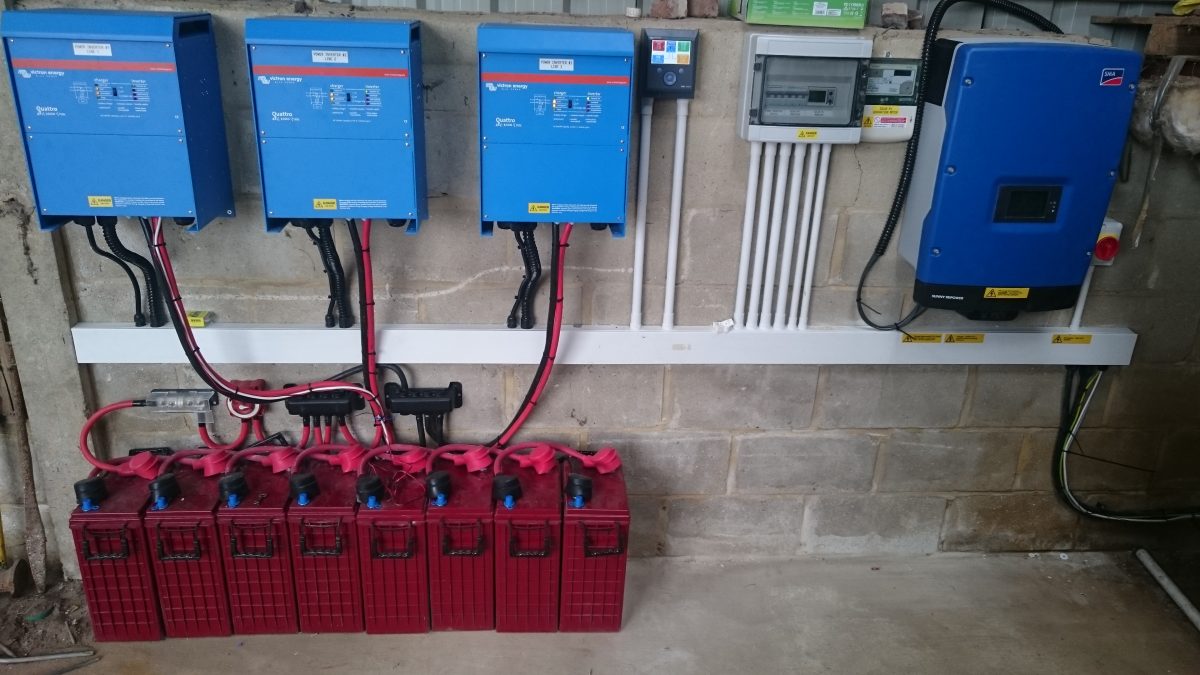Off grid generator battery system – Unveiling the world of off-grid generator battery systems, this comprehensive guide delves into the components, advantages, and applications of these systems, empowering you to harness the power of renewable energy for remote living and emergency preparedness.
Discover the intricacies of off-grid systems, explore the diverse range of battery technologies, and learn the art of system design and maintenance to create a reliable and sustainable power source for your off-grid needs.
Overview of Off-Grid Generator Battery Systems
Off-grid generator battery systems provide a reliable source of electricity in remote areas where access to the traditional power grid is unavailable. These systems combine a generator with a battery bank to store excess electricity generated during periods of high power production.
Expand your understanding about living under the grid with the sources we offer.
The primary components of an off-grid generator battery system include:
- Generator:A device that converts mechanical energy into electrical energy, typically powered by fossil fuels like gasoline or diesel.
- Battery Bank:A collection of batteries that store electrical energy for later use, providing backup power during periods of low generator output or power outages.
- Charge Controller:A device that regulates the flow of electricity between the generator and the battery bank, preventing overcharging or over-discharging.
- Inverter:A device that converts the DC electricity stored in the battery bank into AC electricity, which is compatible with most household appliances and devices.
Advantages of Off-Grid Generator Battery Systems
- Energy Independence:Off-grid systems provide freedom from reliance on the traditional power grid, ensuring a consistent supply of electricity even during outages.
- Reduced Energy Costs:Over time, off-grid systems can save money on electricity bills, especially in areas with high grid-supplied electricity rates.
- Environmental Benefits:Off-grid systems powered by renewable energy sources, such as solar or wind, contribute to a reduction in greenhouse gas emissions.
Disadvantages of Off-Grid Generator Battery Systems
- High Initial Cost:Off-grid systems require a significant upfront investment for the equipment and installation.
- Maintenance and Fuel Requirements:Generators require regular maintenance and fuel to operate, which can add to ongoing costs.
- Limited Power Output:The power output of off-grid systems is limited by the capacity of the generator and the battery bank, which may not be sufficient for high-energy-demanding applications.
Types of Batteries for Off-Grid Systems: Off Grid Generator Battery System
Selecting the appropriate battery for an off-grid system is crucial, as it determines the system’s reliability, lifespan, and cost. Various battery technologies are available, each with its own characteristics and suitability for different applications.
The primary factors to consider when choosing a battery include its capacity, voltage, discharge rate, lifespan, and cost. Capacity refers to the amount of electrical energy the battery can store, measured in amp-hours (Ah). Voltage determines the electrical potential of the battery, typically ranging from 12V to 48V for off-grid systems.
Discharge rate indicates the maximum amount of current the battery can safely deliver, measured in amps (A). Lifespan refers to the number of charge-discharge cycles the battery can endure before its capacity significantly degrades. Cost is an important consideration, as batteries can represent a significant investment in an off-grid system.
For descriptions on additional topics like eco tours mexico, please visit the available eco tours mexico.
Lead-Acid Batteries
- Pros:Inexpensive, widely available, proven technology.
- Cons:Relatively short lifespan (3-5 years), low energy density, require regular maintenance.
Flooded Lead-Acid Batteries, Off grid generator battery system
- Pros:Most economical option, can be easily repaired.
- Cons:Require regular watering, prone to sulfation, not suitable for deep discharge.
Sealed Lead-Acid (SLA) Batteries
- Pros:Maintenance-free, longer lifespan than flooded batteries, can be deep-cycled.
- Cons:More expensive than flooded batteries, lower energy density.
Gel Batteries
- Pros:Longer lifespan than SLA batteries, deep-cycle capability, spill-proof.
- Cons:More expensive than SLA batteries, sensitive to overcharging.
Absorbent Glass Mat (AGM) Batteries
- Pros:High energy density, long lifespan, deep-cycle capability, spill-proof.
- Cons:More expensive than SLA and gel batteries, sensitive to overcharging.
Lithium-Ion Batteries
- Pros:High energy density, long lifespan, lightweight, low maintenance.
- Cons:More expensive than lead-acid batteries, require special charging considerations.
Lithium-Iron-Phosphate (LiFePO4) Batteries
- Pros:High energy density, very long lifespan, excellent deep-cycle capability, safe and stable.
- Cons:More expensive than other lithium-ion batteries, may require a specialized charger.
System Design and Sizing
Designing and sizing an off-grid generator battery system requires careful consideration of energy consumption patterns and backup requirements. This ensures the system meets your specific needs and provides reliable power when needed.
Several factors influence system capacity and battery storage, including daily energy consumption, backup time, generator capacity, and battery efficiency.
Determining System Capacity
To determine the appropriate system capacity, you must estimate your daily energy consumption. This involves identifying all appliances, devices, and systems that will be powered by the system and calculating their energy usage. You can use energy monitoring devices or consult manufacturer specifications to gather this data.
Once you have determined your daily energy consumption, you can calculate the system capacity required to meet your needs. This is typically expressed in kilowatt-hours (kWh) and should be sufficient to power your essential loads for the desired backup time.
Battery Storage Sizing
The size of the battery bank depends on the system capacity, backup time, and battery efficiency. Battery efficiency refers to the amount of energy that can be drawn from the battery compared to its stored capacity. It is typically around 80-90%.
Investigate the pros of accepting advantages of eco tourism in your business strategies.
To determine the battery storage required, you can use the following formula:
Battery Storage (kWh) = (System Capacity (kWh) x Backup Time (hours)) / Battery Efficiency
For example, if you have a system capacity of 10 kWh, require a backup time of 8 hours, and have a battery efficiency of 85%, the required battery storage would be:
Battery Storage = (10 kWh x 8 hours) / 0.85 = 94.12 kWh
This calculation ensures that your battery bank can provide sufficient power to meet your backup requirements.
Installation and Maintenance
Installing and maintaining an off-grid generator battery system requires careful planning and execution. Follow these steps to ensure a safe and efficient system:
Step 1: Site Selection and Preparation
- Choose a well-ventilated area away from flammable materials and sources of heat.
- Prepare the site by leveling the ground and providing adequate drainage.
- Install a concrete pad or gravel base for the generator and battery bank.
Step 2: Equipment Installation
- Place the generator on the prepared base and connect it to the fuel source.
- Install the battery bank in a secure enclosure or rack.
- Connect the generator to the battery bank using heavy-duty cables.
Step 3: Electrical Wiring
- Run electrical wires from the battery bank to the distribution panel.
- Connect the distribution panel to the appliances and loads that will be powered by the system.
- Install circuit breakers or fuses to protect the system from electrical overloads.
Step 4: Safety Precautions
- Always wear appropriate safety gear when working on the system.
- Never operate the generator indoors or in enclosed spaces.
- Keep the system away from children and pets.
Step 5: Regular Maintenance
- Inspect the system regularly for any signs of damage or wear.
- Clean the generator and battery terminals to prevent corrosion.
- Check the electrolyte levels in the batteries and add distilled water as needed.
Case Studies and Applications
Off-grid generator battery systems have proven their worth in various settings, providing reliable power solutions in remote areas and during emergencies. Here are a few case studies showcasing successful installations and applications.
Obtain recommendations related to solar panel conversion kit that can assist you today.
These systems have been instrumental in powering remote homes, cabins, and emergency backup systems, demonstrating their versatility and effectiveness.
Remote Homes
- In Alaska, a remote cabin was equipped with a 5kW generator and a 10kWh battery bank, providing uninterrupted power for lighting, heating, and appliances.
- In Australia, an off-grid homestead utilized a 10kW solar array, a 20kWh battery bank, and a backup generator, ensuring reliable power for a family of four.
Cabins
- A hunting cabin in Montana was powered by a 3kW generator and a 5kWh battery bank, enabling hunters to enjoy essential amenities during their stay.
- A vacation cabin in the Canadian Rockies was equipped with a 2kW generator and a 10kWh battery bank, providing comfortable power for weekend getaways.
Emergency Backup
- During Hurricane Sandy, an off-grid generator battery system in New Jersey provided backup power to a hospital, keeping critical medical equipment operational.
- In California, a solar-powered generator battery system was installed in a community center, serving as an emergency power source during wildfires.
Final Conclusion
Whether you seek to escape the confines of the grid or prepare for unforeseen circumstances, off-grid generator battery systems offer a versatile and eco-conscious solution. Embrace the freedom of energy independence and unlock the potential of remote living with this comprehensive guide to off-grid power.
Questions Often Asked
What are the key components of an off-grid generator battery system?
An off-grid generator battery system typically consists of a generator, batteries, an inverter, a charge controller, and a monitoring system.
What are the advantages of using off-grid generator battery systems?
Off-grid systems offer energy independence, reduced reliance on fossil fuels, and increased resilience during power outages.
How do I determine the size of an off-grid generator battery system I need?
System size depends on energy consumption, backup requirements, and the capacity of the batteries used.
What is the lifespan of an off-grid generator battery system?
Battery lifespan varies depending on the technology used, but typically ranges from 5 to 15 years.
How do I maintain an off-grid generator battery system?
Regular maintenance includes checking battery water levels, cleaning terminals, and monitoring system performance.


